Are you tired of high utility bills and inconsistent home comfort? Your HVAC refrigeration system might be the culprit. With advancements in technology, there are now smarter ways to optimize your system for better performance and savings. For example, upgrading from a SEER 9 to a SEER 14 system can reduce your energy consumption by over 35%1.
This guide is designed to help you understand how to make your home more comfortable while lowering your electricity costs. From selecting the right appliances to simple maintenance tips, we’ll walk you through practical steps to improve your system’s performance. Did you know that regular maintenance alone can cut your heating and cooling costs by 5% to 10%1?.
Let’s dive into actionable strategies that can transform your home into a more efficient and comfortable space. Whether you’re looking to upgrade your system or just want to fine-tune your current setup, this guide has you covered.
Key Takeaways
- Upgrading to a SEER 14 system can reduce energy use by over 35%1.
- Regular maintenance can save 5% to 10% on heating and cooling costs1.
- Adjusting your thermostat can save up to 10% on utility bills1.
- New room air conditioners should have an EER of 10 or higher1.
- Proper sizing ensures your HVAC system works efficiently for your home.
Identifying Energy Challenges in HVAC Refrigeration Systems
Have you ever wondered why your utility bills keep climbing despite your best efforts? Your HVAC system might be hiding some common pitfalls that are quietly draining your wallet. Let’s explore these challenges and how they impact your home.
Understanding Common Energy Pitfalls in Your Home
Many homeowners face issues like leaky ductwork, outdated systems, and improper insulation. For example, about 20% of the air moving through ducts is lost due to leaks and poor connections2. This not only wastes electricity but also makes your system work harder than it should.
Another common problem is using an HVAC system that’s too large or too small for your home. Oversized systems cycle on and off frequently, leading to wear and tear, while undersized systems struggle to maintain comfort. Both scenarios result in higher bills and reduced system lifespan.
Recognizing the Impact on Your Utility Bills
These inefficiencies add up quickly. The average household spends over $2,200 a year on energy bills, with nearly half going to heating and cooling2. By addressing these issues, you could save up to 20% on these costs2.
Simple fixes like sealing ducts or upgrading insulation can make a big difference. For instance, insulating your attic to R-38 can significantly reduce heat loss2. These small changes not only lower your bills but also improve your home’s comfort.
| Common Pitfall | Impact | Solution |
|---|---|---|
| Leaky Ductwork | 20% air loss, higher bills | Seal and insulate ducts |
| Oversized System | Frequent cycling, wear and tear | Proper sizing during installation |
| Poor Insulation | Heat loss, discomfort | Upgrade to R-38 or higher |
Recognizing these challenges is the first step toward making meaningful improvements. Once you understand the issues, you can take action to optimize your system and enjoy a more comfortable, cost-effective home.
Your Ultimate Energy Efficiency Guide: HVAC System Insights
Ready to take control of your home’s performance and expenses? Small changes to your HVAC system can lead to significant savings and improved comfort. Let’s explore practical steps and industry trends to help you optimize your system.
Steps to Optimize Your Energy Consumption
Start by sealing and insulating your ducts. This simple step can improve your system’s performance by up to 20%3. Next, consider upgrading to a programmable thermostat. Homes with these devices save an average of 10-30% on heating and cooling costs4.
Replacing outdated equipment with ENERGY STAR certified units can also make a big difference. For example, high-efficiency systems can reduce annual bills by $200 to $5004. Proper installation is key—improper setup can slash system performance by up to 30%3.
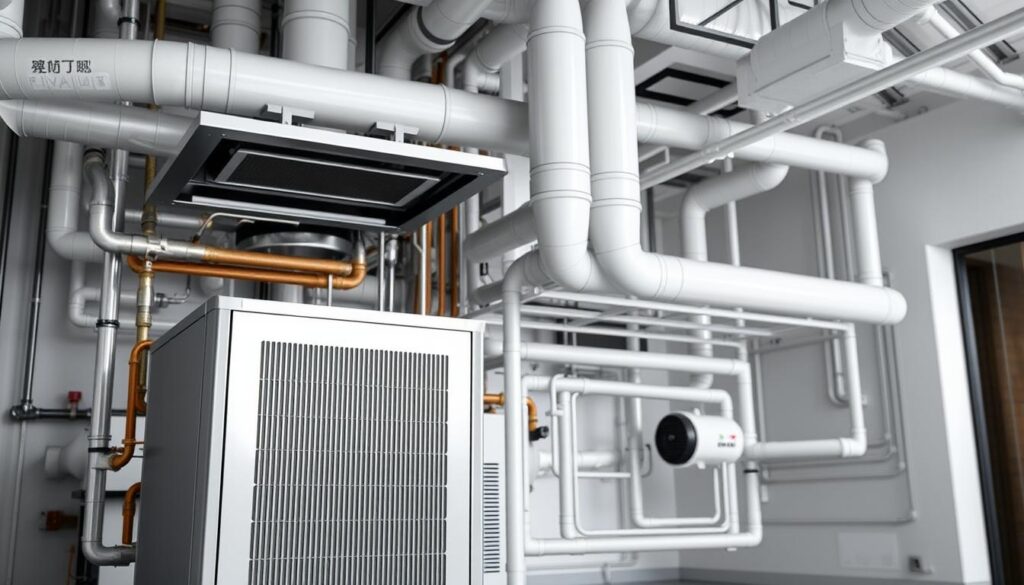
Real-life Examples and Industry Trends for 2022 and Beyond
In 2022, many homeowners embraced variable-speed compressors, which cut electricity use by 25-50% compared to fixed-speed models4. Another trend is the integration of smart thermostats, which can save 10-15% annually4.
Zoning systems are also gaining popularity. By allowing customized temperature control in different areas, they reduce waste by up to 30%4. These innovations not only save money but also enhance comfort.
| Improvement | Savings | Example |
|---|---|---|
| Sealing Ducts | Up to 20% | Improved airflow and reduced leaks3 |
| Programmable Thermostat | 10-30% | Custom schedules for heating and cooling4 |
| High-Efficiency Systems | $200-$500/year | ENERGY STAR certified units4 |
By implementing these strategies, you can transform your home into a more comfortable and cost-effective space. Whether it’s upgrading appliances or adopting new technologies, these steps are designed to help you save money and improve your system’s performance.
Exploring Advanced HVAC Technologies for Home Energy Savings
Curious about how modern HVAC tech can transform your home? The latest innovations are designed to make your space more comfortable while cutting down on electricity use. From renewable energy integration to smart controls, these advancements are reshaping how we think about heating and cooling.
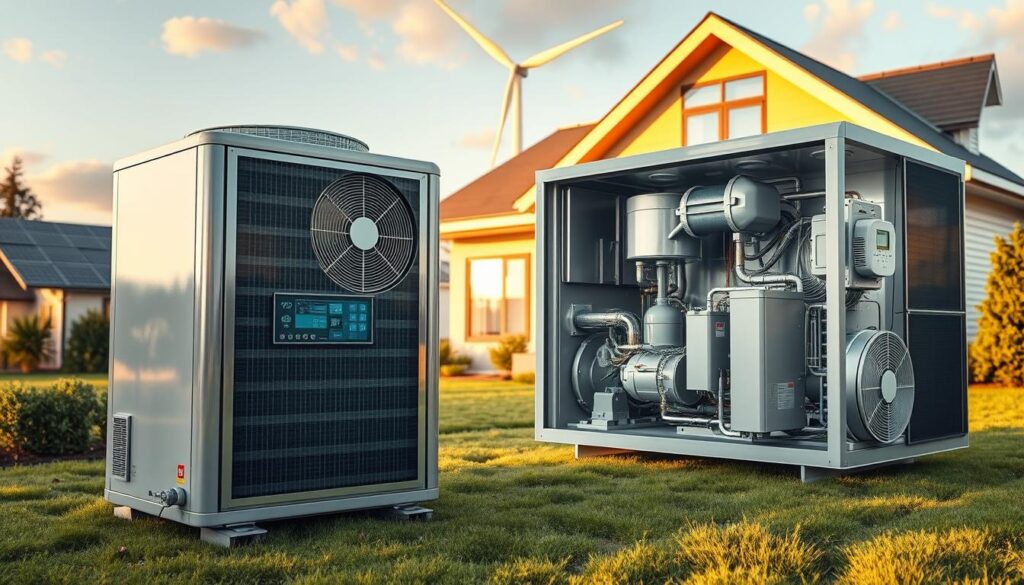
Integrating Renewable Energy and Smart Controls
Imagine your HVAC system working like a well-oiled machine, powered by the sun or geothermal heat. Solar-powered systems can reduce reliance on grid electricity by up to 50%5. Geothermal heat pumps, on the other hand, offer savings of 30-60% compared to traditional systems5.
Smart controls take this a step further. Think of them as the brain of your HVAC system. IoT-enabled devices adjust settings in real-time, reducing waste by 15-20%6. Programmable thermostats can save you an average of $180 per year5.
These technologies not only lower your cost but also improve your home’s performance. For example, zoning systems allow you to control temperatures in specific areas, cutting waste by 20-30%5.
| Technology | Savings | Benefit |
|---|---|---|
| Solar-Powered HVAC | Up to 50% | Reduces grid reliance5 |
| Geothermal Heat Pumps | 30-60% | Eco-friendly and efficient5 |
| Smart Thermostats | $180/year | Automated adjustments5 |
By adopting these advanced systems, you’re not just saving money—you’re future-proofing your home. Plus, many of these upgrades qualify for tax credits, making them even more appealing. Stay tuned to learn how to maximize these incentives in the next section.
Leveraging Tax Incentives and Home Energy Audit Procedures
Did you know that upgrading your home’s systems could qualify you for significant tax credits? Starting in 2023, homeowners can receive up to $3,200 per year for installing energy-efficient improvements7. These incentives are designed to help you save money while enhancing your home’s performance.
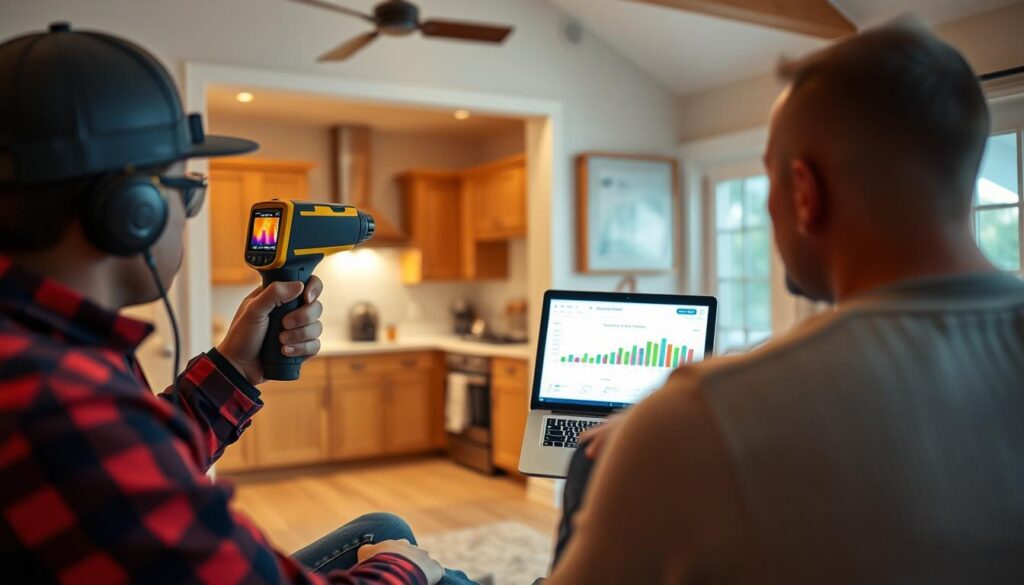
Navigating Federal and State Tax Credits Effectively
The IRS offers a variety of tax credits to encourage home improvements. For example, you can get 30% back on the cost of a home energy audit, up to $1507. Upgrades like insulation, windows, and doors also qualify for credits, with annual caps ranging from $600 to $1,2007.
If you’re considering a major upgrade, heat pumps can yield a 30% credit, up to $2,000 per year7. States like New Jersey also offer additional programs, allowing you to maximize your savings7. Be sure to check local guidelines to take full advantage of these opportunities.
How to Conduct a Comprehensive Home Energy Audit
A home energy audit is a great way to identify areas for improvement. Start by hiring a qualified auditor who can assess your home’s performance. They’ll check for issues like air leaks, insulation gaps, and inefficient appliances8.
Once the audit is complete, you’ll receive a detailed report with recommendations. Many of these improvements qualify for tax credits, making it easier to offset the cost7. For example, sealing leaks or upgrading insulation can significantly reduce your utility bills.
By combining these findings with available tax incentives, you can make your home more comfortable and cost-effective. Ready to take the next step? Let’s explore practical ways to implement these improvements in the following section.
Implementing Practical Tips to Reduce Energy Costs and Improve Efficiency
Small changes can lead to big savings—here’s how to get started. Whether you’re looking to lower your bills or enhance your home’s comfort, these actionable tips can make a real difference. Let’s dive into practical steps you can take today.
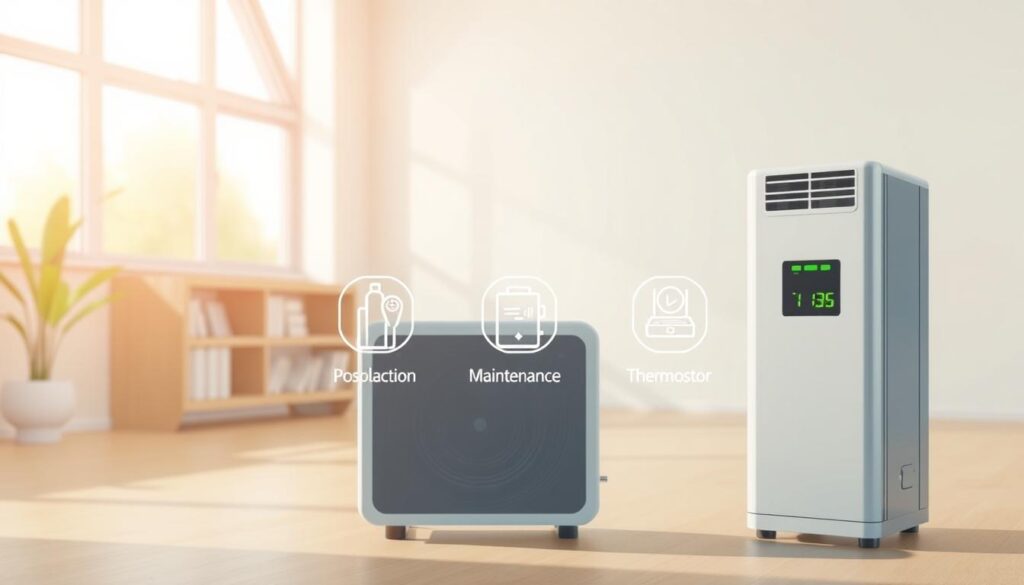
Actionable Recommendations for Energy-Efficient Improvements
Start by sealing your ducts. Leaky ductwork can waste up to 20% of the air moving through your system, driving up your bills9. A simple fix like this can improve your system’s performance and save you money.
Next, consider upgrading to a smart thermostat. These devices can reduce heating and cooling costs by 10-30%10. They adjust settings automatically, ensuring your home stays comfortable without unnecessary waste.
Don’t forget about insulation. Properly insulating your attic to R-38 can significantly reduce heat loss, keeping your home warmer in winter and cooler in summer10. This small improvement can yield big savings over time.
| Improvement | Savings | Benefit |
|---|---|---|
| Sealing Ducts | Up to 20% | Reduces air loss and improves airflow9 |
| Smart Thermostat | 10-30% | Automates temperature adjustments10 |
| Insulation Upgrade | Significant | Reduces heat loss and improves comfort10 |
Finally, consider upgrading to ENERGY STAR certified appliances. High-efficiency systems can cut annual bills by $200 to $50010. These upgrades not only save money but also enhance your home’s performance.
By implementing these changes, you’ll see a noticeable difference in your bills and comfort. Every step you take brings you closer to a healthier, more cost-effective home.
Conclusion
Transforming your home’s comfort and savings is easier than you think. By diagnosing common challenges, adopting advanced technologies, and leveraging tax incentives, you can make meaningful improvements. For instance, sealing ductwork can reduce air loss by up to 20%, while smart thermostats save 10-30% on heating and cooling costs11.
Don’t overlook the value of a professional energy audit. It can identify hidden inefficiencies and qualify you for credits, making upgrades more affordable11. Every small step, from optimizing your system to insulating your attic, adds up to significant benefits over time.
Ready to take action? Start by scheduling an audit or exploring local programs. These strategies not only save money but also enhance your home’s performance. With the right approach, you’ll enjoy a more comfortable, cost-effective space for years to come.
FAQ
What are the most common energy challenges in HVAC refrigeration systems?
How can I optimize my HVAC system to save on energy costs?
Are there tax incentives available for upgrading my HVAC system?
What is a home energy audit, and how can it help me?
Can integrating renewable energy sources with my HVAC system save money?
What are some quick tips to improve my home’s energy efficiency?
How do smart controls enhance HVAC system performance?
What should I look for when upgrading my HVAC system?
Source Links
- Guide to Home Heating and Cooling
- Heat & Cool Efficiently
- The Most Efficient HVAC Systems: Detailed Guide for 2024
- Unlock the Secrets of High-Performance Heating: Exploring Advanced HVAC Technologies – DD Plumbing & Heating
- How Technology Impacts HVAC Energy Efficiency: A Detailed Look in 2025
- 2024 Energy Efficient Home Improvement Federal Tax Credit
- What You Need to Know About Energy-Efficient Tax Incentives
- Reducing Electricity Use and Costs
- Top 10 energy saving tips
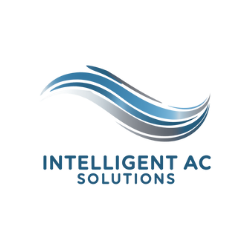
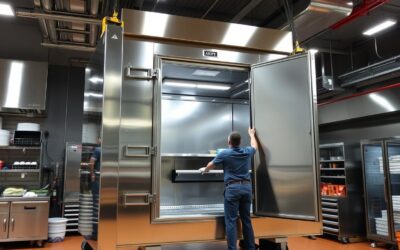
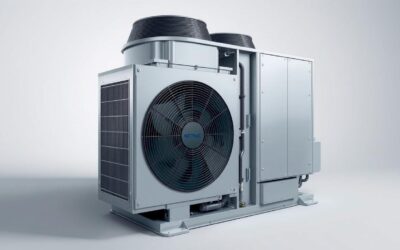
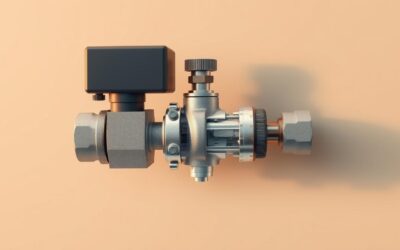
0 Comments